A 10-year-old girl raised over S$250,000 for charity online. This is how she did it
Chng Rui Jie started out with a desire to help hungry rabbits. With some help from her father, she has gone on to run 18 online campaigns for different charities.
SINGAPORE: Emblazoned with smiley cartoon rabbits and a bright pink background, the animated graphic on Chng Rui Jie’s online fund-raising page stands out from the other campaigns on the Giving.sg website.
“Hungry EASTER BUNNIES thank you”, it is titled. In simple language, the 10-year-old Gongshang Primary School pupil writes that she loves rabbits, calls for donations and signs off as a “bunny lover”.
This is just one of the 18 online campaigns Rui Jie has run in the course of the past year.
Some, like this, have raised a few thousand dollars; others brought in more, such as a campaign she started for The Straits Times’ School Pocket Money Fund, which raised over $56,000 in six months.
As of December, she has raised more than S$250,000.

SHARING HER VOICE
It started in the midst of the circuit breaker when Rui Jie’s father, Anthony Chng, had to move his fund-raising efforts online.
The 45-year-old is the head of enterprise at Children-At-Risk Empowerment Association (Care) Singapore, a charity that focuses on helping at-risk youths succeed in life.
Rui Jie noticed him updating an appeal on national donation platform Giving.sg that aimed to get food to the families of student beneficiaries. She asked him about it, and as he was explaining, a thought hit him.
“I asked her … do you think rabbits have food? If people are going hungry, do you think people have time to care for hungry rabbits?” he recalls. “She gasped: ‘That’s terrible!’”
Rui Jie chimes in: “I wanted to donate my pocket money.”
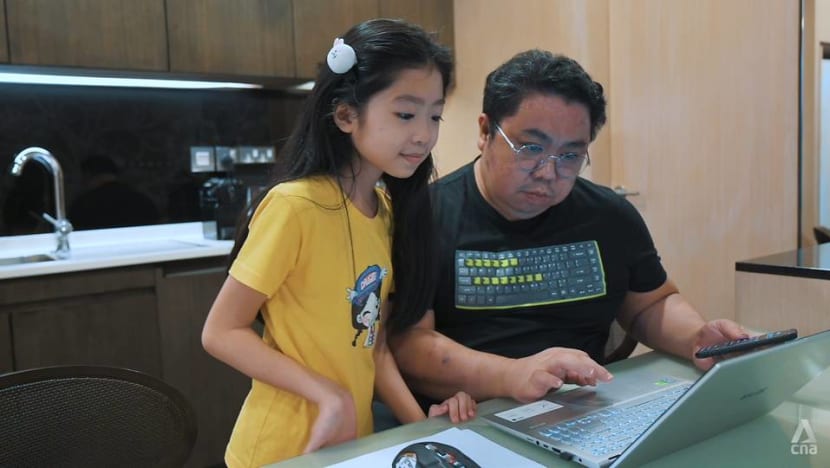
But Anthony reasoned with her: Even if she were to donate half her S$2 daily pocket money, how much impact could she make?
“I told her: Rui Jie, that’s cool, but rabbits need more than S$1 for food. So why don’t we share your voice and tell more people to donate S$1, so more rabbits can be helped? So that was the genesis.”
He taught her how to create graphics using design software Canva and, in his words, left her to it. Within a month, she raised S$2,045 for the Society for the Prevention of Cruelty to Animals (SPCA).
Not the best-performing campaign, Anthony admits, but the seed had been planted.
Two days after she started her first campaign, she launched another. Owing to the pandemic, her school had discontinued a programme giving biscuits to hungry children during recess, so she decided to raise funds for “little P1 and P2 children”.
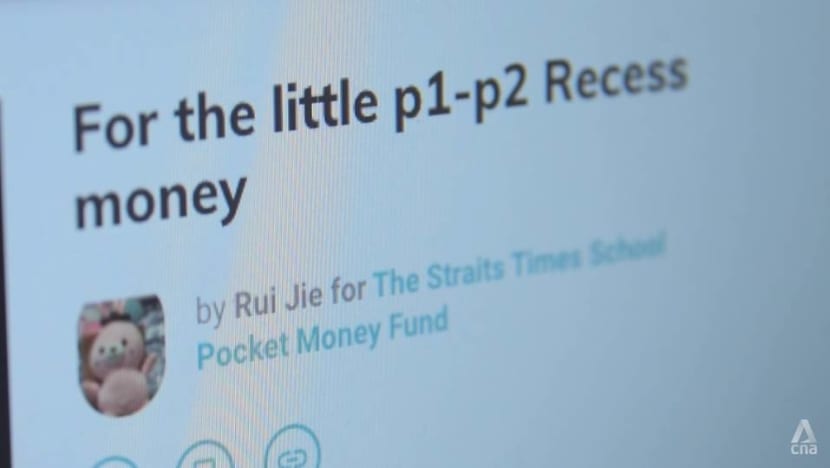
This campaign has been her most successful yet, raising more than S$56,000 for recess money.
WHAT’S HER SECRET?
Over the months, Rui Jie has run campaigns for organisations like the SPCA and others including Care Singapore. Her father often helps her to shortlist charities she could help, telling her about the work they do.
Animals (especially rabbits) are a favourite of hers. So are children, but she is careful to say, children who are younger than her.
“Because when I help them, they won’t say, thank you mei mei (little sister), but thank you jie jie (older sister),” she explains, eliciting a laugh from her parents. “It feels like I’m older than them, and it feels good.”
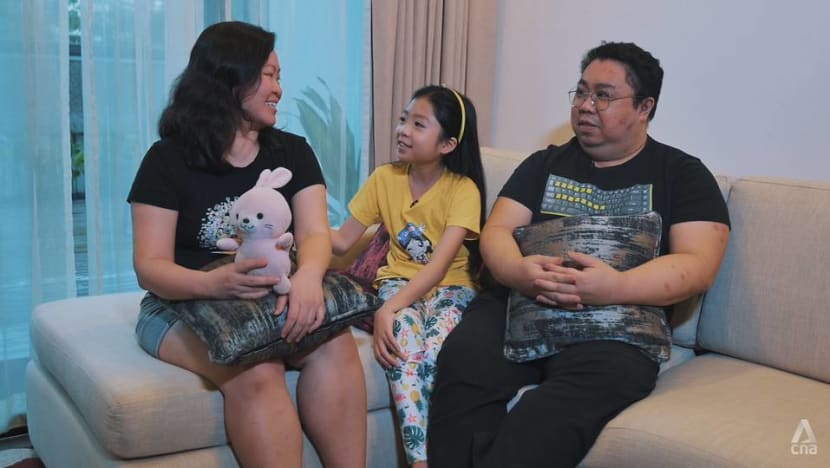
She is an only child and the youngest in her extended family, so her parents do know that being called jie jie means a lot to her.
In her campaigns, says Anthony, she is the “director” who designs the graphics and writes the posts, while he helps her to post her work on the fund-raising platform. “Basically she makes the decision, and I’m the minion,” he jokes.
None of them expected that she would go on to raise S$250,000.
“I didn’t think it was a lot of money at first,” she says. “When my friends saw me, they said their parents told them it was a lot of money, and that was when I started feeling proud of myself.”
WATCH: How a 10-year-old raised $250,000 online for charity (3:22)
Besides the money she has raised online, Anthony says there have been times when her campaigns translated into offline donations.
“Some corporate donors called me and said … hey, I saw this campaign that’s raising money for your charity, and I want to support,” he recounts.
Yet neither she nor her parents have shared her campaigns with their friends or on social media, he adds. They have no idea who has contributed. Why, then, has she managed to touch many people’s hearts?
Perhaps, Anthony suggests, her campaigns capture people’s attention because they are worded simply.
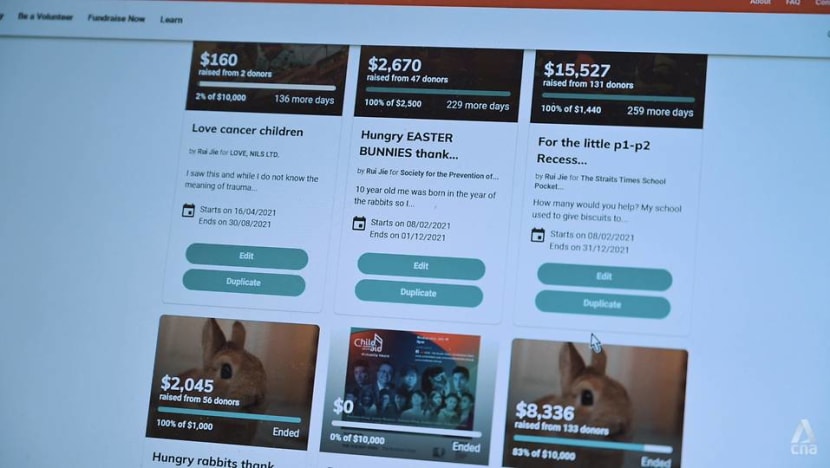
For example, he recalls both of them discussing how to word the School Pocket Money Fund campaign and eventually settling on “For the little P1 and P2 recess money”.
“It’s simple and succinct. And people would be able to … appreciate what we’re doing,” he cites.
(And because Rui Jie wanted to help children younger than her, the campaign was updated to include Primary Three pupils when she entered Primary Four.)
Her mother thinks the authenticity of her voice could also have played a part. “As a young girl, the way she phrases stories can be different in terms of the visuals and images that she selects,” says Joan Sim.
Indeed, these are reasons why Caroline Lim, the head of the Singapore University of Social Sciences’ Organisation and Leadership for Non-Profits Programme, thinks Rui Jie’s campaigns stand out.
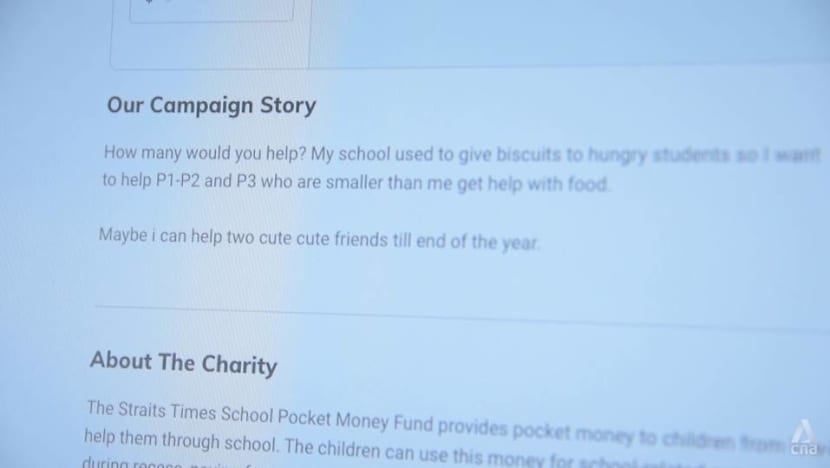
“We know that donors give because they’re moved by their hearts and less by their heads, especially when it comes to micro-contributions,” she says. “Her simple, short story tugs at people’s heartstrings.”
Another important element is that donors “see the image” in their minds. This is how Rui Jie’s pink animated graphic worked in a big way, cites Caroline.
“In those very simple few seconds, I could see the rabbit going hungry,” says the researcher. “You must be able to tell a story that can imprint an image in the minds of their donors and get them to act.”
INCREASED COMPETITION FOR ONLINE DONORS
Rui Jie’s efforts also stand out against a backdrop of an increasing number of campaigns going online as the COVID-19 pandemic halted physical fundraisers.

Online platforms Giving.sg and Give.asia both told CNA Insider they saw a sharp increase in the amount of money raised in the past financial year.
Giving.sg hit S$102 million in donations in the period from April last year to this March — the largest amount donated in its history.
It saw a 158 per cent increase in donations from the previous year and a 140 per cent increase in the number of campaigns, says Tony Soh, deputy chief executive officer of the National Volunteer and Philanthropy Centre, which runs the platform.
At Give.asia, the past year’s donations were two times higher overall, with some standout months, says co-founder Pong Yu Ming. Donations in April last year, for example, stood at S$4 million, compared to the S$1 million raised in April 2019.
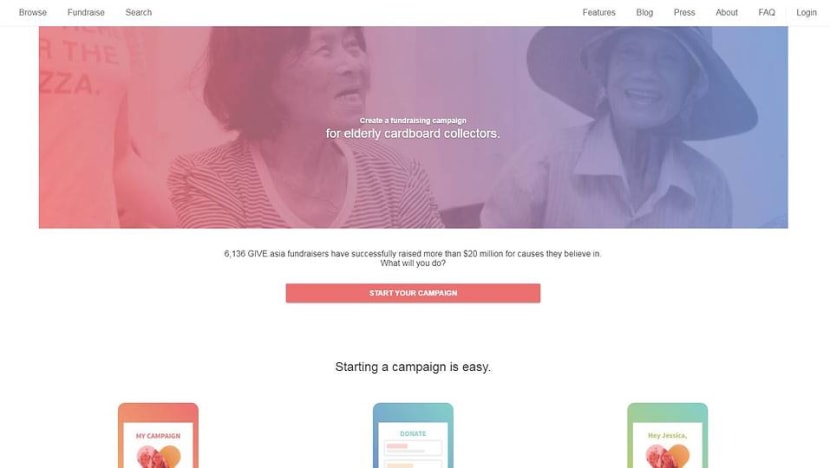
The pandemic has helped to drive online donations, with Tony noting that the circuit breaker accelerated the adoption of digital technology in daily life. “The public felt more comfortable, I think, transacting and eventually also donating online,” he says.
According to Give.asia, a campaign that includes a video is 10 times more likely to reach S$100,000 in donations. One that includes a story of more than 100 words is also 10 times more likely to do well.
A campaign organiser who updates donors regularly is four times more likely to encounter repeat donors.
Tony says topics that are at the forefront of people’s minds can also draw more responses. For example, a campaign to help victims of the 2019 accident at Lucky Plaza raised more than S$360,000 in seven days.

“When there’s an outpouring of public emotions, outrage and support, when there’s a campaign that’ll channel funds to the victims, that can activate a lot of giving,” he says.
Caroline notes that charities hoping to move their fund-raising online, however, must make some adjustments. For one thing, the profile of online donors is different from people who usually donate at physical fundraisers, such as a gala dinner or marathon.
“(Online donors) may give small amounts, but they give on a regular basis and they give quite frequently,” she says.
Messaging is also important for standing out in the increasingly crowded online scene.
“It’s about crafting that message that can stir emotion, relate to your target donors and compel them to donate,” she says. “Most importantly, because we’re talking about the online platform, we want them to share (the campaign).
“We can’t run away from that — things can spread so fast. You just need a few people to share, and suddenly … there’s the exponential impact.”

A cause that has a universal appeal could mean donations pouring in from all over the world. “The market for charitable giving is infinite. When charities move online, they’re widening the pool of donors, supporters and advocates,” she says.
Ultimately, Tony notes, it is important to try. The varying degrees of success of Rui Jie’s different campaigns indicates that “there’s no magic formula” for what works.
“There’s no need to … figure out the formula,” he says. “Make the best effort, share it with your friends, and if it’s something that triggers people’s emotions, I think that’s going to be successful.
“There are good practices and learning points. But the best thing about it is, if you feel something about it, just give it a try.”
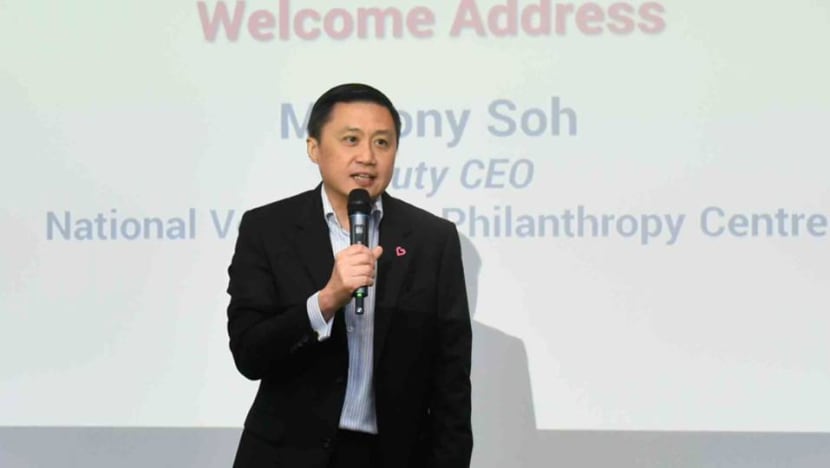
THEY WANT HER TO KEEP GOING
The importance of giving back and helping others is something Rui Jie’s parents have taught her since young.
In his past role as the Singapore Symphony Orchestra’s head fundraiser, Anthony took her to charity concerts and let her mingle with young beneficiaries.
“You have food, you get to go to classes, you don’t have to worry about having no Internet or no money,” he reminds her. “What if you have no laptop? Even if you’re talented, how are you going to (raise funds)?
So she gets the sense that not everyone is as lucky as her.
His lessons do not seem to be lost on her. She is, for example, proud to have helped other pupils — “little friends”, in her words — with their homework in the student care centre she attends.
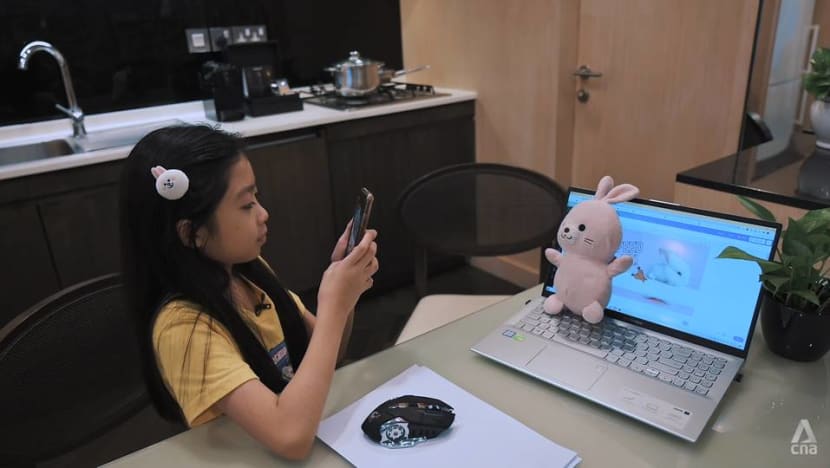
To her, the six-figure sum she has raised is just a number, an amount she would save for retirement if it was in her bank account, she says in all seriousness.
What has excited her more are the photographs of rabbits and the certificates of appreciation she has received from the charities she has raised funds for, all of them saved in a folder.
In addition, Frasers Hospitality chose her as a Kindness Hero for its Remembering Kindness global campaign, which encouraged people to share stories of individuals who have helped others in need. She was the youngest winner and participant worldwide.
Anthony says that collecting the certificates and recognising her achievements with nominations such as this are intentional. “I don’t try to impress on her the amount (she’s raised),” he says. “I’m more concerned with getting her to continue.
“Sometimes you stare at the screen and ask yourself if anyone cares that I’m doing this … or are they getting so much help they don’t actually need me?
“I want to give her the sense that she has a voice … that what she does is important and she can ask others to do it as well.”


















